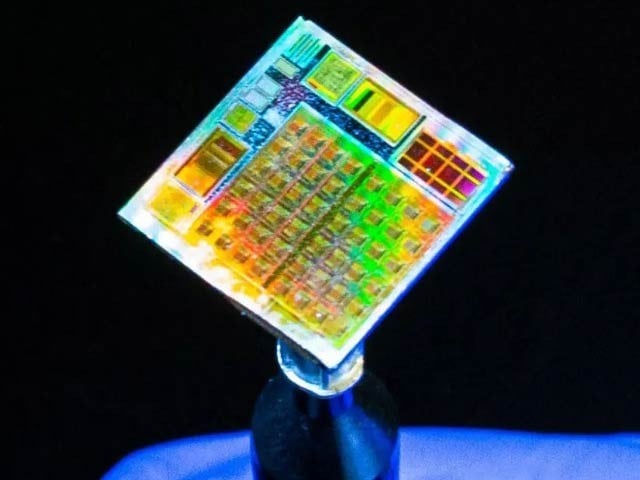Experts from the King Abdulaziz University of Science and Technology in Saudi Arabia have developed the world’s first Toddy microchip. Photo: KAUST
Riyadh: Dr. Mario Lanza and his colleagues from the King Abdulaziz University of Science and Technology in Saudi Arabia have created the world’s first two-dimensional microchip. This chip performs high quality work at low power.
Both designing and manufacturing this thin chip were major challenges that had not been solved for a long time. This is the reason why it is being made an extraordinary feat in microchip manufacturing.
The chip was made possible by the discovery of graphene, the thinnest layer of graphite, in 2004. Although many other devices have been made from graphene, there has been no success in making a microchip for 20 years. Then making it workable was a challenge in its own right. But now AUST experts have made it possible.
According to Mario Lanza, the traditional silicon-based ‘complementary metal oxide semiconductor’ (CMOS) circuit was first used as a basis. He then developed a toddy material from six-dimensional (hexagonal) boron nitrate etched onto ultra-thin copper foil. Then it was carefully inserted into the CMOS circuit. Then the electrodes were made and the circuit was made by photolithography. Thus cells were formed which consisted of a transistor and a memristor.
The thickness of the two-dimensional boron nitrate layer was only 18 atoms or 6 nanometers. A current was passed through them which was controlled. Then the Toddy chip was tested over a long period of time and it performed very well.
(function(d, s, id){
var js, fjs = d.getElementsByTagName(s)[0];
if (d.getElementById(id)) {return;}
js = d.createElement(s); js.id = id;
js.src = “//connect.facebook.net/en_US/sdk.js#xfbml=1&version=v2.3&appId=770767426360150”;
fjs.parentNode.insertBefore(js, fjs);
}(document, ‘script’, ‘facebook-jssdk’));
(function(d, s, id) {
var js, fjs = d.getElementsByTagName(s)[0];
if (d.getElementById(id)) return;
js = d.createElement(s); js.id = id;
js.src = “//connect.facebook.net/en_GB/sdk.js#xfbml=1&version=v2.7”;
fjs.parentNode.insertBefore(js, fjs);
}(document, ‘script’, ‘facebook-jssdk’));


